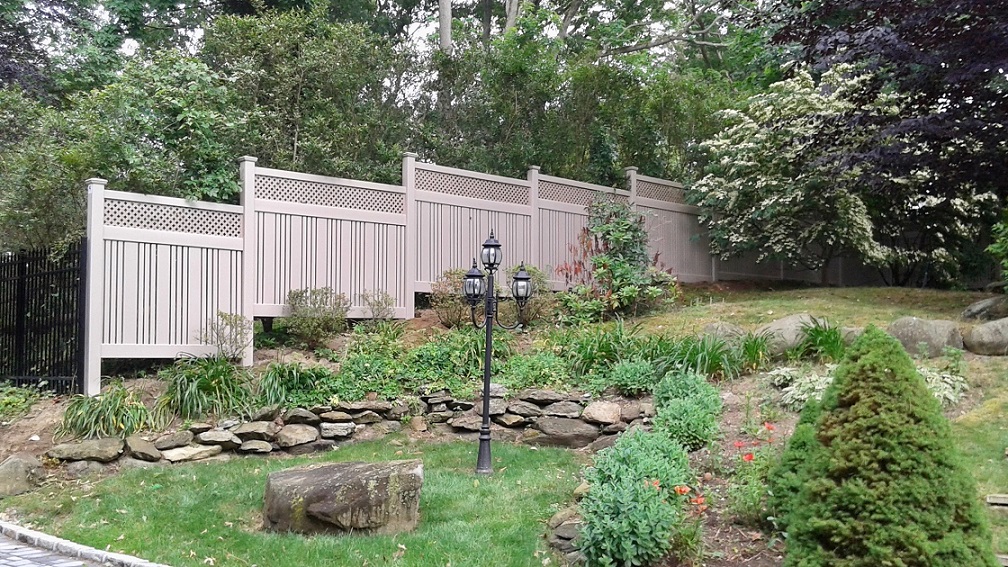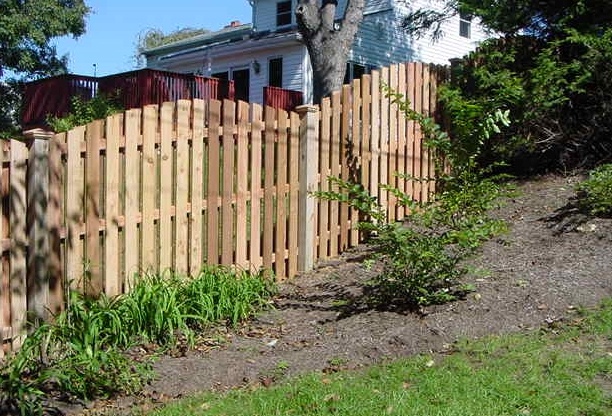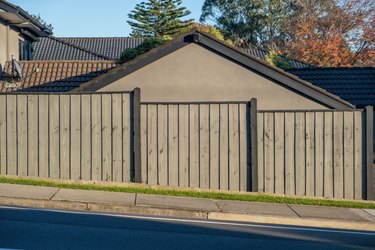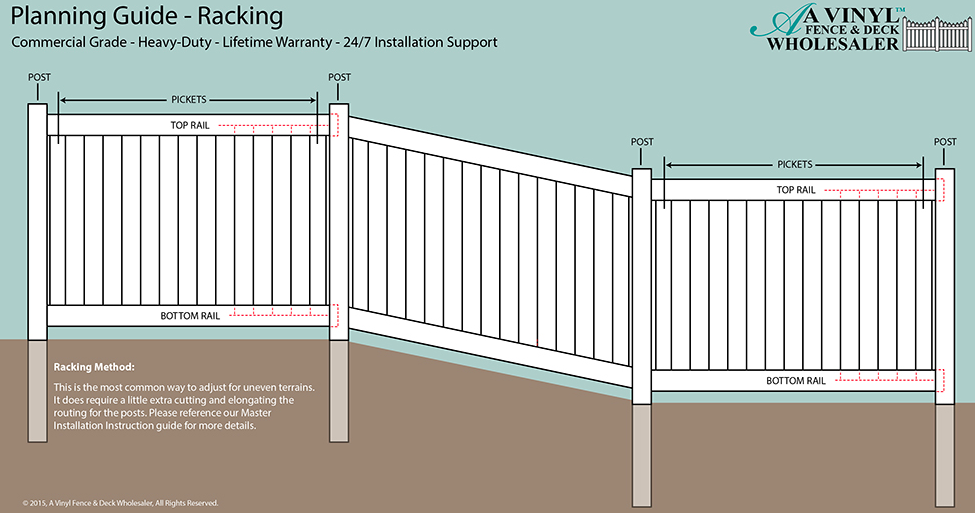If you’re looking to expand your knowledge about fences, you’ve come to the right place. Welcome to “fencedude.com,” a blog dedicated to providing comprehensive and engaging content about everything fence-related. From the different types, sizes, shapes, and materials of fences to determining which one is suitable for your specific needs, this blog covers it all. Through a series of informative posts, we aim to educate readers on the characteristics and advantages of various fence types, offer insights on choosing the appropriate size and shape, and provide practical advice for selecting and installing fences. So, whether you’re looking to enhance privacy, ensure security, enclose a backyard, or add decorative elements to your property, we’ve got you covered. Let’s dive into the fascinating world of fences together!
The Impact of Sloping Land on Fence Installation
When it comes to installing a fence on sloping land, there are several factors that need to be considered. Slope gradient and stability, soil erosion and drainage, accessibility and terrain, fence material and design considerations, as well as the structural integrity and stability of the fence, all play a role in determining the success of the installation. In this article, we will discuss these factors in detail, explore the challenges and solutions for fence installation on sloping land, highlight the benefits of installing a fence on such terrain, and provide maintenance tips to keep your fence in top condition.

Factors to Consider When Installing a Fence on Sloping Land
1. Slope Gradient and Stability
The slope gradient of the land is an important factor to consider when installing a fence. Steeper slopes can pose challenges with stability and the overall appearance of the fence. It is crucial to evaluate the slope gradient and ensure that the fence design and installation method are compatible with the terrain. If the slope is too steep, additional measures may be required to stabilize the fence and prevent potential shifting or collapsing.
2. Soil Erosion and Drainage
Sloping land is often more prone to soil erosion and drainage issues. Proper drainage is essential to prevent water buildup, which can damage the fence and compromise the stability of the posts. It is important to consider the natural drainage patterns of the land and implement appropriate measures to redirect water away from the fence. Additionally, using erosion control techniques, such as retaining walls or terraces, can help mitigate soil erosion and maintain the integrity of the fence.
3. Accessibility and Terrain
The accessibility of the sloping land also needs to be taken into account during fence installation. Steep slopes might require additional equipment and techniques to access the site and ensure a smooth installation process. Uneven terrain can pose challenges when it comes to aligning and leveling the fence panels and posts. Proper planning and preparation, including assessing the terrain and determining the best approach for installation, are crucial to overcome these challenges.
4. Fence Material and Design Considerations
The choice of fence material and design is another crucial factor to consider when installing a fence on sloping land. Different materials and designs have varying adaptability to uneven terrain. Some materials, such as aluminum or vinyl, offer more flexibility in terms of accommodating slopes. Additionally, certain fence designs, such as scalloped or stepped designs, can better adapt to sloping land by following the natural contour of the terrain. It is important to consult with a fencing professional to determine the best material and design options for your specific sloping land.
5. Structural Integrity and Stability of the Fence
Ensuring the structural integrity and stability of the fence is vital when dealing with sloping land. The fence must be able to withstand the pressure and forces exerted by the sloping terrain, including potential erosion, water runoff, and ground movements. Proper installation techniques, such as securely anchoring the posts and providing additional support if needed, are essential to maintain the stability and longevity of the fence.
Challenges and Solutions for Fence Installation on Sloping Land
1. Leveling and Grading the Land
One of the main challenges in installing a fence on sloping land is achieving a level and properly graded surface. Uneven terrain can make it difficult to align the fence panels and posts. To overcome this challenge, it may be necessary to level and grade the land before installing the fence. This can be done through techniques such as cutting into the slope, filling in low areas, or building retaining walls or terraces.
2. Building Retaining Walls and Terraces
In cases of significant slope gradients, building retaining walls or terraces can provide stability and create a level surface for fence installation. Retaining walls can hold back soil and prevent erosion, allowing for a more secure fence installation. Terraces, on the other hand, create flat or gently sloping areas that can accommodate the fence panels and posts more easily. These solutions require careful planning and professional expertise to ensure proper construction and integration with the fence.
3. Adjusting Fence Panels and Posts
On moderately sloping land, it may be possible to adjust the fence panels and posts to follow the natural contour of the terrain. This can be done by cutting panels to fit the slope or using angled brackets to connect panels. Posts may need to be installed at varying heights to maintain the level of the fence. It is important to carefully measure and plan the adjustments to ensure a seamless and secure fence installation.
4. Using Step-Down or Racked Panels
Another solution for fence installation on sloping land is to use step-down or racked fence panels. Step-down panels gradually descend with the slope, while racked panels are pre-assembled with an angle to accommodate the slope. Both options can provide a visually appealing and structurally sound result. Consulting with a fencing professional can help determine the most suitable option for your specific sloping land.
5. Ensuring Proper Clearance and Ground Contact
Regardless of the specific installation method chosen, it is crucial to ensure proper clearance and ground contact for fence panels and posts on sloping land. Panels should not touch the ground to prevent rot and damage, while posts need to be securely anchored in the soil to maintain stability. Adjustments and additional support might be necessary to achieve proper clearance and ground contact, ensuring the longevity of the fence.

Benefits of Installing a Fence on Sloping Land
1. Enhanced Privacy and Security
Installing a fence on sloping land can provide enhanced privacy and security to your property. The uneven terrain can act as a natural barrier, making it more difficult for intruders to access your premises. Additionally, a fence can create a sense of seclusion and privacy, especially when combined with landscaping elements that complement the slope.
2. Natural Aesthetic Appeal
Sloping land can add a unique and natural aesthetic appeal to your fence installation. The interplay between the fence and the natural contours of the terrain can create an eye-catching visual effect. By choosing fence materials and designs that harmonize with the landscape, you can enhance the overall beauty of your property.
3. Reduced Noise and Wind Protection
A fence on sloping land can provide additional noise reduction and wind protection. The uneven terrain can help break up the wind flow, reducing its impact on your property. The fence acts as a barrier, absorbing and deflecting sound, making your outdoor space more peaceful and enjoyable.
4. Increased Property Value
Installing a fence on sloping land can increase the value of your property. It adds a functional and visually appealing feature that enhances the overall curb appeal. A well-designed and properly installed fence can attract potential buyers and make your property stand out in the market.
5. Effective Use of Uneven Terrain for Landscaping
Sloping land offers unique opportunities for creative landscaping. By incorporating the fence into the overall landscape design, you can create stunning visual effects and make the most of the natural terrain. Incorporating terraces, retaining walls, or plantings into your fence installation can add depth and dimension to your outdoor space.

Maintenance Tips for Fences on Sloping Land
1. Regular Inspection and Repair
Regularly inspecting your fence on sloping land is essential to identify any signs of damage or instability. Check for loose panels or posts, signs of erosion or soil movement, and any other issues that may compromise the integrity of the fence. Promptly repair any damages to ensure the longevity of your fence.
2. Proper Drainage and Water Management
Maintaining proper drainage and managing water around your fence is crucial to prevent erosion and water damage. Ensure that water is directed away from the fence through proper grading, drainage systems, or installing gutters and downspouts. Regularly check and clean any drainage features to keep them functioning effectively.
3. Managing Vegetation and Soil Erosion
Controlling vegetation and managing soil erosion is important to maintain the stability of the fence on sloping land. Keep plants, shrubs, and trees away from the fence to prevent them from growing into or causing damage to the structure. Implement erosion control measures, such as mulching or installing erosion control blankets, to minimize soil erosion and protect the integrity of the fence.
4. Stabilizing Fence Posts and Panels
Due to the unique challenges of sloping land, fence posts and panels may require periodic stabilization. Check the posts for any signs of shifting or instability, and reinforce them as needed. Adjust and secure any loose panels or connections to ensure the fence remains structurally sound.
5. Professional Maintenance and Repair Services
While regular maintenance can help prolong the life of your fence on sloping land, it is advisable to seek professional maintenance and repair services when necessary. Professionals have the expertise and tools needed to identify and address any underlying issues, ensuring the long-term stability and functionality of your fence.
By considering the factors, challenges, and benefits discussed in this article, you can make informed decisions when installing a fence on sloping land. Proper planning, careful execution, and regular maintenance will help ensure a durable and aesthetically pleasing fence that complements the unique characteristics of your terrain.
Common Questions:
-
Can I install a fence on steep sloping land?
- Yes, it is possible to install a fence on steep sloping land. However, it is important to consider the slope gradient and stability, and choose appropriate installation methods and materials.
-
How can I prevent soil erosion around my fence on sloping land?
- To prevent soil erosion, ensure proper drainage, redirect water away from the fence, and implement erosion control measures.
-
What materials are suitable for installing a fence on sloping land?
- Materials such as aluminum or vinyl offer more flexibility in accommodating slopes. It is best to consult with a fencing professional to determine the most suitable material for your specific sloping land.
-
Are there any design considerations for installing a fence on sloping land?
- Yes, it is important to choose fence designs that can adapt to the natural contours of the terrain, such as scalloped or stepped designs. Consulting with a fencing professional can help you determine the best design options for your sloping land.
-
How often should I inspect my fence on sloping land?
- Regular inspections are recommended to identify any signs of damage or instability. Inspect your fence at least once a year, or more frequently if you notice any issues.
-
Can I install a fence on sloping land by myself, or do I need professional help?
- While it is possible to install a fence on sloping land by yourself, it is advisable to seek professional help, especially for more complex installations. Professionals have the expertise and tools needed to ensure a secure and stable fence.
-
How can I make my fence on sloping land more stable?
- To enhance the stability of your fence on sloping land, make sure the posts are securely anchored in the soil and consider additional support if needed. Stabilization techniques may vary depending on the specific installation method and the slope gradient.
-
Can a fence on sloping land provide privacy and security?
- Yes, installing a fence on sloping land can enhance privacy and security by acting as a physical barrier and making it more difficult for intruders to access your property.
-
Will a fence on sloping land require more maintenance than a fence on flat ground?
- While a fence on sloping land may require some additional maintenance, proper installation and regular upkeep can help ensure its longevity. Regular inspections, managing vegetation and soil erosion, and addressing any potential issues promptly are key to maintaining a fence on sloping land.
-
How can I increase the resale value of my property by installing a fence on sloping land?
- Installing a fence on sloping land can increase the resale value of your property by adding a functional and visually appealing feature. A well-designed and properly installed fence can enhance the overall curb appeal and attract potential buyers.

